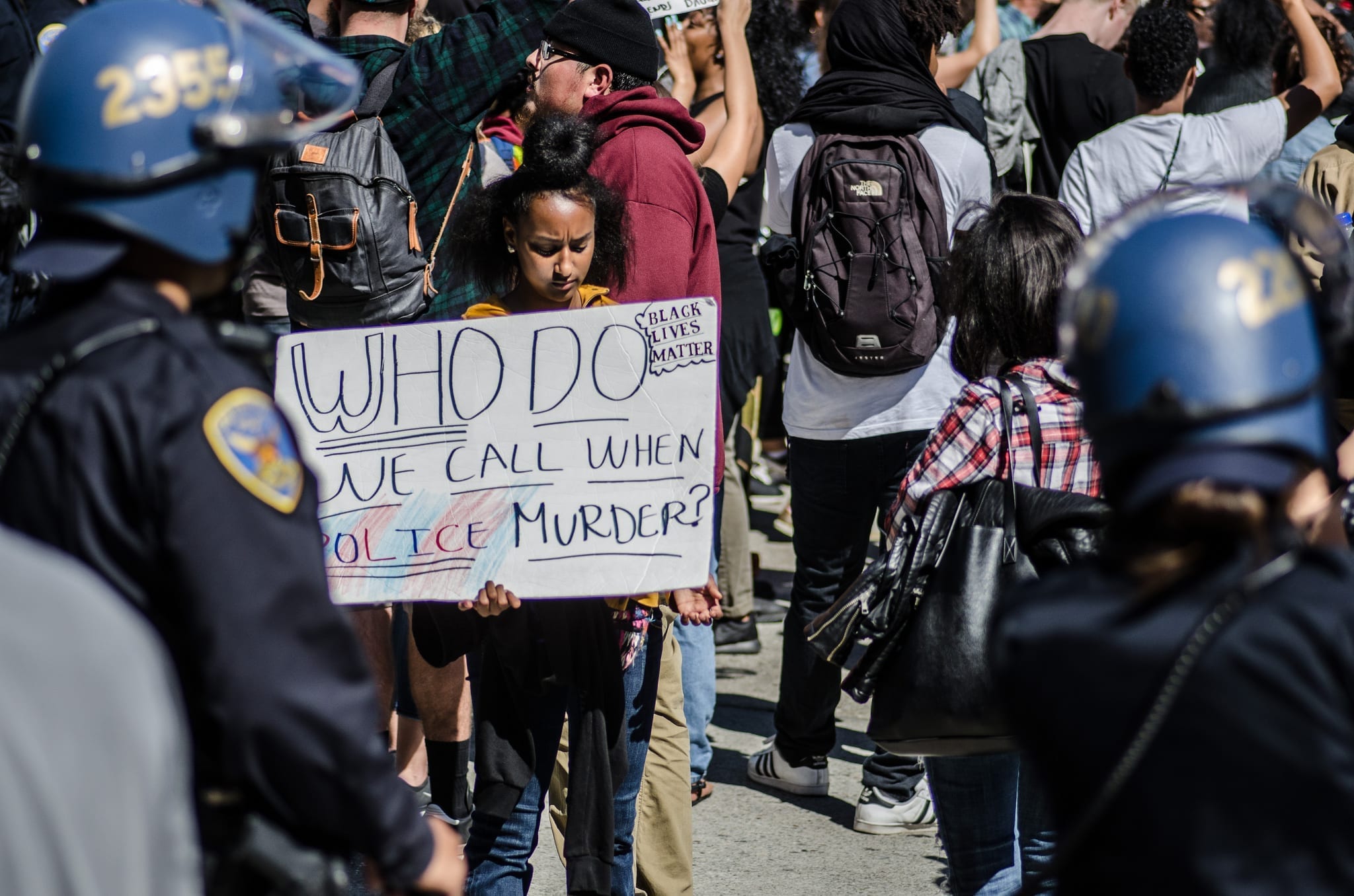After arresting dozens in St. Louis, police chanted Whose Streets? Our Streets! Police are supposed to serve the public, so who are the masters?
In Part 1, we explored how a secretive government wants our data without sharing their own. In Part 2, we talked about some ways that business, too, is unfriendly. Here, in Whose Streets, we’ll see how police are increasingly willing to violently quell public protests, one of the last tactics of those desperate for change.
On September 15th, former police officer Jason Stockley was acquitted of murder charges following the 2011 shooting death of Anthony Lamar Smith, a black motorist. Immediately, hundreds of people took to the St. Louis streets to protest the verdict and the death of yet another (likely) unarmed black man. Following a day of peaceful demonstrations, violence erupted and protesters were met by police in body armor. After orders to disperse were given on Sunday night, but the crowd could not depart the area because police were blocking the exits, officers began making arrests and roughing up the protesters and bystanders alike. Police could be heard chanting: Whose Streets? Our Streets!
The refrain, usually a cry of the powerless, also echoed a chant heard scarcely a month ago during the “Unite the Right” rally in Charlottesville, where tiki-torch wielding white supremacists marched through the empty university campus shouting slogans like Blood and Soil, Jews Will Not Replace Us, and Whose Streets – Our Streets. There, as in Missouri, racism and violence played out in gruesome ways. One difference is that police stood aside in Charlottesville, but seemed perhaps too empowered in St. Louis, acting out in a manner that could best be described as “unhinged.” Those arrested included an Air Force lieutenant who left his apartment to see what was going on, a credentialed journalist, an undercover St. Louis police officer, and a documentary filmmaker who was pepper sprayed both before and after he was restrained and knocked unconscious.
How does this all relate? In a best case scenario, people would have a great deal of control over their circumstances. Votes would matter, making our voices heard in Washington, while the way we spend our money would determine which companies succeed and how they do business. Failing this, our ability to protest destructive practices by business or government should be supported by the former (in the case of government overreach) or the latter (with the power to regulate businesses). However, when government and business support each other against the interests of the people in a system enforced by violence (along with rampant racism, media manipulation, a charismatic leader, and a desire to return to imagined past greatness), we have a major problem. Protesting no longer works. The police state is ascendant. Anyone who isn’t worried is either not a student of history or stands to gain from the arrangement.
In earlier days, city streets were ruled by pedestrians. They served as a commons where people would meet, socialize, and do business. Once vehicular traffic started displacing citizens on foot (a kind of subsidy for the automotive business), those whose streets were taken from them had fewer places to make themselves heard. Further, the modern highway system was intended, in part, to divide and replace the “urban blight” of racially diverse neighborhoods while it took (largely white) suburbanites to work in the city.

There’s a certain history, then, behind protesters taking to the streets and blocking roads. And it is exactly these voices, of poor Americans not well-served by those whose streets destroyed their communities, that South Dakota’s Lynne DiSanto (R) meant to intimidate recently by sharing the “All Lives Splatter” meme. (Can you imagine if the same had been said of Tea Party protests during the Obama administration?) When “nobody cares about your protest” (as the meme, which encourages drivers to slam into protesters, claims) peaceful protest against systemic problems becomes less than useful. Is it any wonder that more violent reactions and groups, such as Antifa, gain credibility among the marginalized?
When neither business nor government can be counted upon to do the right thing, and violent police abuse both bystanders and protesters in the streets, who are the masters? And more importantly, how can those whose streets and futures have been lost, win them back?


Join the conversation!